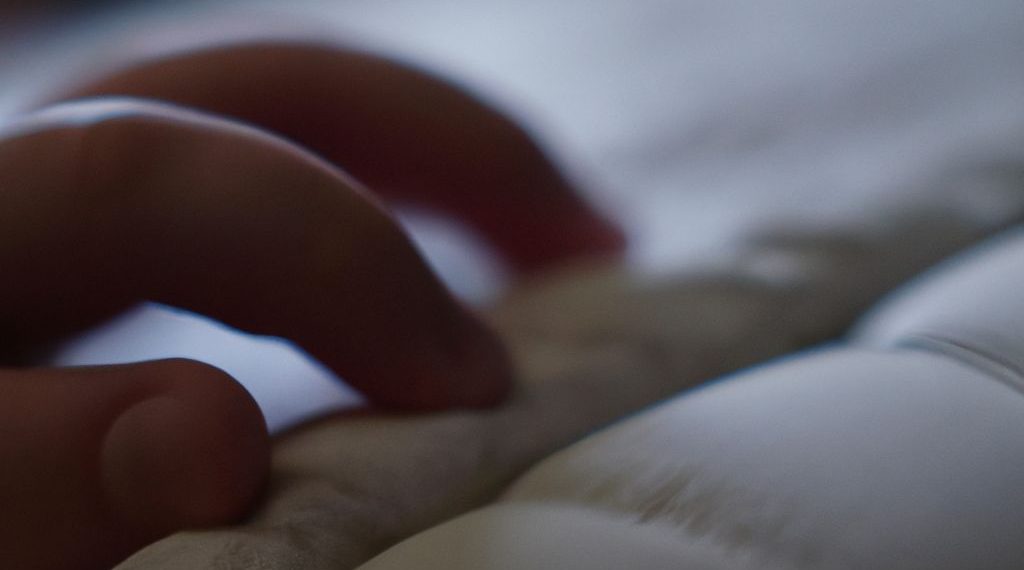Key takeaway:
- Firm crib mattresses are recommended for infants due to the importance of crib mattress firmness for their safety and development.
- Testing the firmness of a crib mattress can be done using CDs or checking the mattress’s indentation resistance.
- Additional tips for crib safety include creating a safe sleep environment and following other safety precautions recommended by medical professionals and experts.
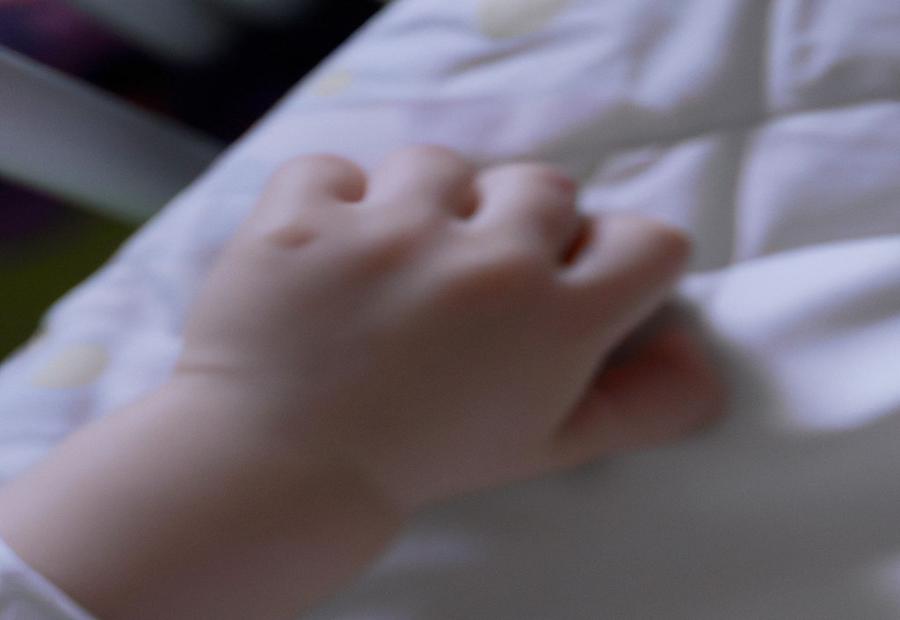
Photo Credits: Www.Mattressreviewguru.Com by Jeffrey Green
When it comes to choosing a crib mattress, ensuring its firmness is of utmost importance for your baby’s safety and development. In this article, we will shed light on the significance of crib mattress firmness and the purpose behind this informative piece. So, let’s dive in and discover why understanding the importance of crib mattress firmness is crucial for your little one’s well-being.
Importance of crib mattress firmness
Crib mattress firmness is crucial for baby safety and wellbeing. It impacts their skeletal development and reduces the risk of suffocation or rebreathing. The importance of firmness cannot be understated.
Using a firm mattress may reduce the risk of Sudden Infant Death Syndrome (SIDS). Soft mattresses can cause the baby’s face to sink in, which increases the risk of carbon dioxide accumulation and potential suffocation. Therefore, firmness is key for creating a safe sleep environment.
Firmness also ensures adequate skeletal support for growing infants. It maintains proper spinal alignment, preventing excessive sinking or sagging which could result in unnatural curvature.
To determine if a crib mattress is firm enough, there are several methods available. For example, placing CDs on different areas of the mattress, or assessing its indentation resistance by pressing down on various sections.
Combination mattresses with both firmer and softer sides are becoming more common. However, it is important to ensure that even the softer side meets acceptable firmness standards.
In addition to mattress firmness, parents should also take other precautions when creating a safe sleep environment. These include placing the baby on their back, flat surface, no loose bedding, pillows or toys, meeting safety standards with properly positioned rails, and preventing access to cords and strings.
Medical experts emphasize the significance of firm mattresses in reducing the risk of SIDS. They advise parents to select mattresses that meet safety standards and adhere to recommended practices for safe sleep.
Purpose of the article
This article informs readers about the need for firm crib mattresses and why they are important for infants. It also raises awareness of the risks associated with soft or overly plush mattresses.
Firm mattresses reduce the chance of suffocation or rebreathing. This is when a baby’s breath is trapped in bedding materials, leading to a drop in oxygen levels. Firm mattresses keep airways open and allow for proper ventilation during sleep.
Firm crib mattresses also give good skeletal support. This aids babies’ developing bones and joints. Tests can be done using CDs or other flat objects to check mattress firmness. Parents should look for mattresses that have enough indentation resistance – these will spring back when pressure is applied. Don’t use combination mattresses with firm and soft sides as these might not provide enough support.
To create a safe sleep environment, keep the area free of clutter and toys. Don’t use sleep positioners or wedges as these raise the risk of Sudden Infant Death Syndrome (SIDS). Place babies on their backs to sleep and avoid putting them on soft surfaces like sofas or adult beds. Sharing a bed with an infant is not recommended as it increases the risk of accidental suffocation.
This article provides information on crib mattress safety and safe sleep practices for infants. Using these guidelines will help ensure a secure sleeping environment for babies.
Why firm crib mattresses are recommended
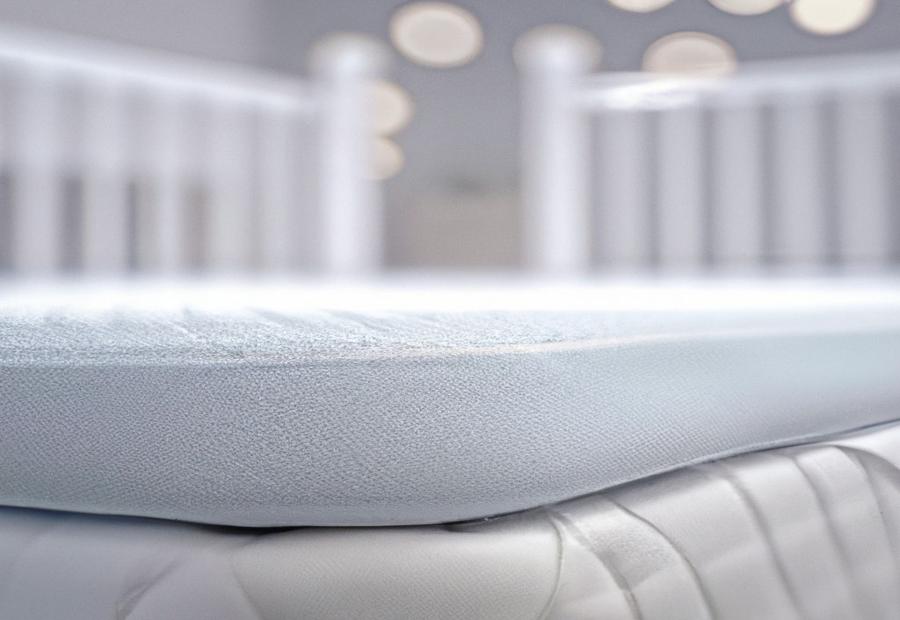
Photo Credits: Www.Mattressreviewguru.Com by William Baker
Firm crib mattresses are crucial for your baby’s safety and development. In this section, we will explore why experts recommend firm mattresses for cribs. We’ll discuss the rebreathing theory, which highlights the importance of a flat surface in reducing the risk of SIDS. Additionally, we’ll delve into the significance of skeletal support and how a firm mattress promotes proper alignment and growth for your little one.
Rebreathing Theory
The rebreathing theory is key when creating a safe sleep environment for infants. It suggests that if the crib mattress is too soft, it can increase the risk of the baby rebreathing their own exhaled breath and potentially suffocating. So, it’s important to use firm crib mattresses. To evaluate the firmness of a mattress, try placing CDs on the surface and pressing down with moderate force. Or, do an indentation resistance test to get a quantitative measurement. Combination mattresses (foam and springs) should also be evaluated. In addition to a firm mattress, there are other crib safety tips. Remove excess bedding like pillows and fluffy blankets. Put babies on their backs to sleep. Use fitted sheets without gaps or loose material. It’s also important to regularly inspect the mattress for any signs of wear or deterioration. Over time, even the firmest mattresses can start to lose their supportive properties. Replace if there are any signs of sagging, indentations, or wear and tear. If you notice these tell-tale signs of needing a new mattress, it’s time for a replacement. Understanding the rebreathing theory and selecting a firm crib mattress are key to providing an infant with a secure and comfortable place to rest. Babies need a good backbone for all that crying, after all!
Skeletal Support
It is crucial to prioritize skeletal support when selecting a crib mattress for your infant. A firm mattress can help maintain the natural curvature of the spine and ensure healthy growth. Plus, it can prevent flat head syndrome, as it distributes pressure evenly across the baby’s skull.
Sufficient firmness in a crib mattress ensures that an infant’s weight is distributed properly. This allows their bones and joints to grow without unnecessary stress or strain.
Invest in a crib mattress that offers your baby adequate skeletal support. Provide them with an environment that encourages proper alignment and growth. Choose wisely for their comfort and development.
Ways to determine if a crib mattress is firm enough
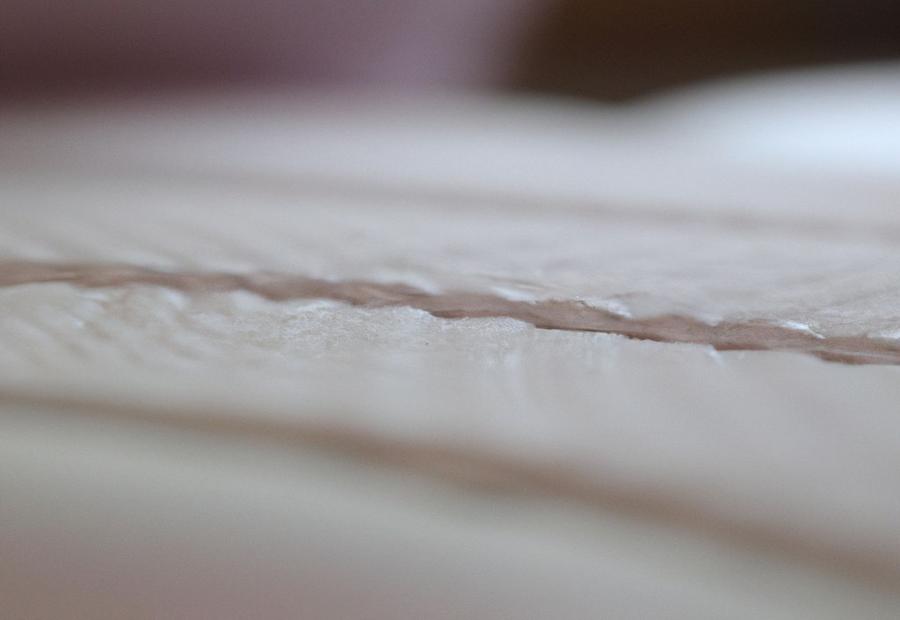
Photo Credits: Www.Mattressreviewguru.Com by Robert Baker
Determining if a crib mattress is firm enough is crucial for the safety and comfort of your baby. In this section, we will explore different ways to assess the firmness of a crib mattress. From testing with CDs to measuring indentation resistance, we will equip you with the knowledge to make an informed decision. Understanding the importance of a firm mattress is key in providing your little one with a secure sleep surface.
Testing your mattress using CDs
Can your mattress handle the pressure? Test it using CDs! It is important for the safety and well-being of your infant to have a firm crib mattress. Using CDs is a great way to test this out!
Step 1: Place CDs on the mattress – Lay a few CDs flat on the surface. The weight of the CDs will mimic an infant’s body weight.
Step 2: Check for sinking – Gently press down on the CDs. There should be no significant sinking or indentation.
Step 3: Evaluate resistance – Lift the CDs off the mattress and see how quickly it returns to its original shape. It should be resilient and not sag or linger.
This CD test can help you make sure you’ve got the right mattress for your baby. However, be sure to also take into account industry standards and guidelines when making your decision.
Indentation resistance
An ideal crib mattress should possess good indentation resistance, so the baby won’t sink in too deep. This will ensure clear airways and support for the baby’s developing bones. A firm mattress that holds its shape is perfect for healthy skeletal growth.
The American Academy of Pediatrics suggests a firm mattress with good indentation resistance to reduce the risk of SIDS. To test it, apply pressure or weight to simulate infant movements.
Combination mattresses, with one side firm and one soft, may not be suitable for infants. Carefully check the specifications and features before buying.
Combination mattresses
Combination mattresses are available with various features. They may have layers or zones for different levels of firmness. Breathable materials or moisture-wicking properties may also be included to regulate temperature.
These mattresses undergo extensive testing to make sure they meet safety standards. Features such as reinforced edges and corner supports are included to prevent sagging. Removable covers may also be given.
Parents must be careful when choosing a combination mattress. They should consider factors such as materials used, certifications obtained, and customer reviews.
A study by the American Academy of Pediatrics recommends a firm mattress to reduce the risk of SIDS. Parents should choose a crib mattress that meets safety standards and provides enough firmness.
Additional tips for crib safety
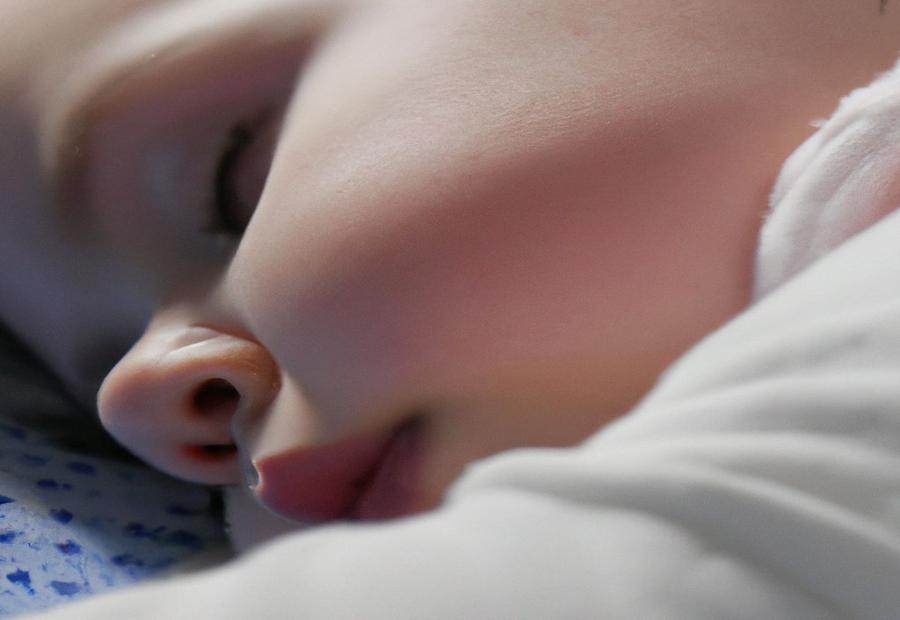
Photo Credits: Www.Mattressreviewguru.Com by Terry Williams
When it comes to crib safety, it’s essential to go beyond choosing a firm mattress. In this section, we’ll explore additional tips that ensure a safe sleep environment for your baby. From creating a secure sleeping space to implementing other important safety precautions, we’ve got you covered. Let’s dive into these crucial details to provide your little one with the safest crib experience possible.
Safe sleep environment
For babies to be safe and secure during sleep, a safe sleeping environment is essential. To create such, there are some guidelines that must be followed:
- No pillows, stuffed animals, or loose bedding in the crib.
- The mattress should fit properly with no gaps or spaces.
- Temperature should be comfortable, with appropriate clothes for body temperature regulation.
Medical pros recommend back sleeping for infants and a smoke-free environment. Following these guidelines can reduce the risk of SIDS and other sleep-related accidents.
Inspect the mattress regularly for signs of wear and tear. Check for any indents or sagging that might indicate a loss of firmness. If found, replace the mattress for optimal safety standards.
Creating a safe sleep environment is vital for infants. By following guidelines and regularly assessing the mattress, parents can ensure their babies rest peacefully in a secure and comfortable space.
Other safety precautions
Creating a safe sleep environment is very important for your baby’s health. Ensure that the crib has no loose bedding, pillows, or stuffed animals, and that the mattress fits snugly with no gaps. Place your baby on their back to sleep, as this minimizes the risk of Sudden Infant Death Syndrome (SIDS). It’s also best to share a room with your baby, not a bed. Regularly check on your baby while they sleep to make sure they are safe. Make sure your home and car are smoke-free, as this reduces the risk of SIDS and other respiratory issues. Following safety precautions and expert advice is key to your baby’s health and safety – remember, sleeping like a baby takes a whole new meaning when it comes to crib safety. Provide a secure sleep space for your baby for peace of mind.
Other safety precautions for infant sleep
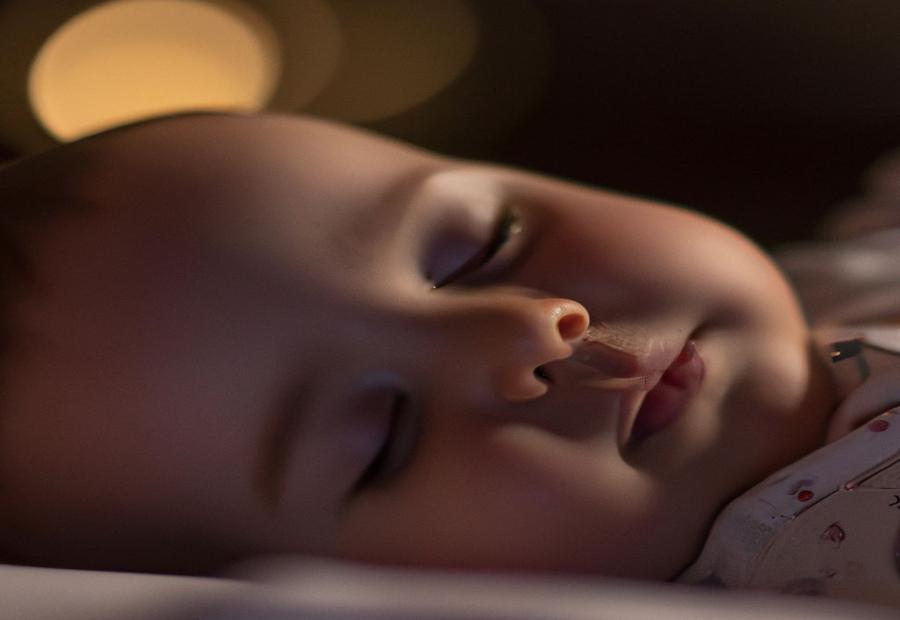
Photo Credits: Www.Mattressreviewguru.Com by Thomas Allen
When it comes to ensuring a safe sleep environment for our infants, it’s important to consider more than just the firmness of the crib mattress. This section explores other essential safety precautions that parents need to be aware of. From medical recommendations to expert advice, we’ll provide valuable insights on creating a secure sleeping environment for your little one. Remember, being well-informed about these precautions is crucial for the well-being and peace of mind of both parents and babies.
Medical recommendations
For infants’ health and safety, a firm crib mattress is key. It’s a must to avoid incidents like rebreathing. Plus, it provides the necessary skeletal support needed for their developing bones.
To check the firmness, test the mattress using CDs. Slide them under different areas and observe how easily they move. Also, check for indentation resistance.
Consider combination mattresses for both comfort and support. These have firmer layers for infants and softer ones for when they grow older.
In addition, make sure the mattress fits snugly in the crib and use fitted sheets without any gaps. Avoid pillows, blankets, stuffed toys, or other soft bedding as they can cause suffocation.
For sleep safety, medical experts recommend placing babies on their backs in a separate sleep area (e.g., a crib). Plus, avoid co-sleeping as it increases the risk of suffocation or accidental injury.
Expert advice
For crib mattress safety, expert advice is key. Pediatricians and neonatologists know about infant health and sleep habits. They can tell us about firm crib mattresses to reduce suffocation risks and help with spine development. Further, they can offer tips on how to position babies, regulate temperature, and create a good sleep environment.
It’s important to remember that infants’ needs can vary. Therefore, seeking personalized guidance from a healthcare provider is recommended. This way, parents get accurate information that’s tailored to their child’s needs.
Conclusion and Q&A
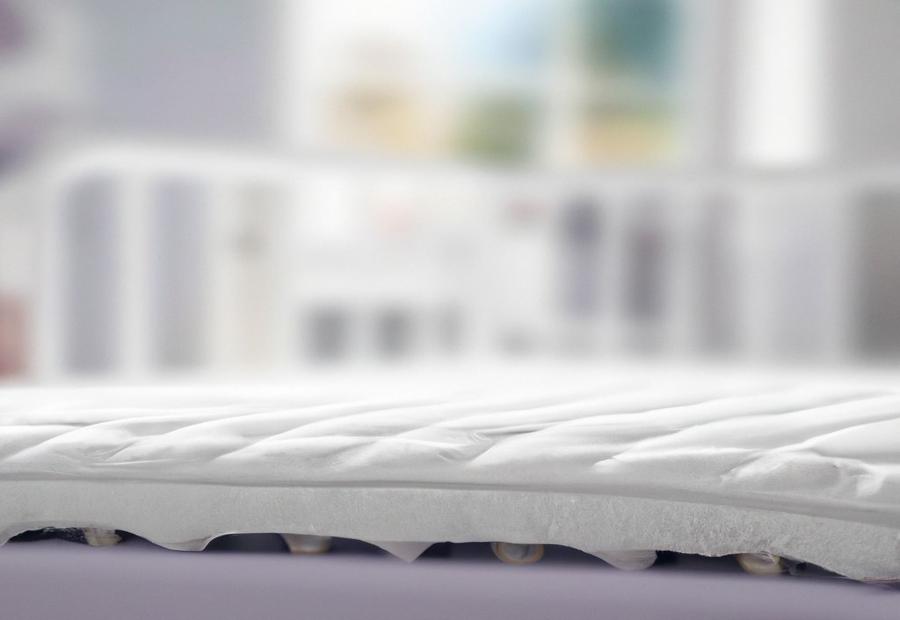
Photo Credits: Www.Mattressreviewguru.Com by Benjamin Torres
A firm crib mattress is key for your baby’s safety and comfort. To see if it’s firm enough, follow a couple of steps:
- First, check it meets safety standards set by regulatory bodies. These make sure the mattress gives enough support and firmness for your baby’s growing body.
- Next, test it by pressing your hand on the surface. If it bounces back quickly when you take your hand away, it’s probably firm enough.
A firm mattress reduces the risk of suffocation and helps healthy spinal development.
When picking a crib mattress, think about your baby’s age and development. Newborns need a firmer mattress to stop them from sinking. For older babies, choose a soft mattress that still supports their developing bones. Also, check the materials used. Natural, organic materials are firmer and more supportive than synthetic ones.
Inspect the mattress regularly for any damage like sagging, indentations, or not meeting safety standards. When this happens, replace it. This will give your baby a safe and comfy sleep.
A firm crib mattress is essential for your baby’s safety and comfort.
References for further information on crib mattress safety and safe sleep practices
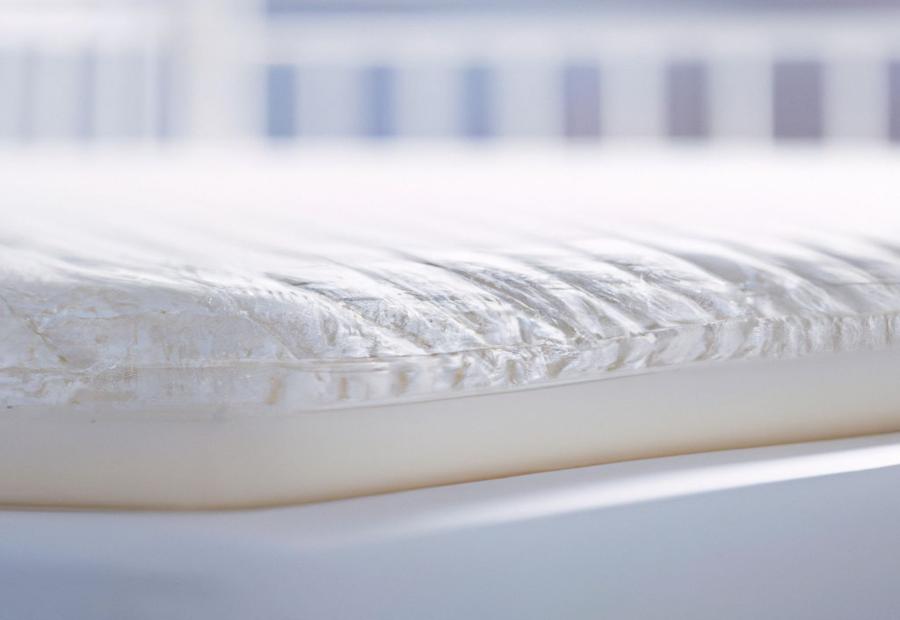
Photo Credits: Www.Mattressreviewguru.Com by Ethan Robinson
References are key for parents and caregivers to ensure baby safety when sleeping. They serve as guides to teach people the value of a firm crib mattress and how to practice safe sleep.
It is essential to get a mattress that offers good support, to reduce the danger of suffocation and positional asphyxiation. The mattress must fit snugly in the crib, without any gaps.
The references provide valuable info on cleaning the mattress, to create a clean and hygienic environment for the baby. They also explain safe sleep practices, such as putting babies on their backs to sleep and avoiding loose items in the crib, which may help reduce the chance of SIDS.
When buying a mattress, checking its safety certifications is recommended. This will ensure it meets safety requirements and has been tested. Regularly inspecting the mattress for wear and tear is also important for optimal safety and comfort for the child.
References equip parents and caregivers with the knowledge to create a secure sleep space for their babies. By following the guidelines, they can help ensure baby well-being and reduce the risk of sleep-related accidents.
Some Facts About How to Tell if Crib Mattress is Firm Enough:
- ✅ Soft mattresses can increase the risk of SIDS and suffocation for babies. (Source: greenactivefamily.com)
- ✅ Experts, including the National Institute of Child Health and Human Development and the American Academy of Pediatrics, recommend firm crib mattresses for babies. (Source: greenactivefamily.com)
- ✅ To determine if a crib mattress is firm enough, check for a firm and flat surface, resistance to indentations, and strong edges and corners. (Source: greenactivefamily.com)
- ✅ Babies have more bones than adults and their bones are softer, so they require more support from a firm mattress. (Source: greenactivefamily.com)
- ✅ The FIRMS checklist can help determine if a crib mattress is firm enough. (Source: greenactivefamily.com)
FAQs about How To Tell If Crib Mattress Is Firm Enough
How can I tell if my crib mattress is firm enough?
To determine if your crib mattress is firm enough, you can follow these guidelines:
- Check for a firm and flat surface
- Test resistance to indentations
- Ensure strong edges and corners
Why is it important for a crib mattress to be firm?
A firm crib mattress is important for the following reasons:
- It provides necessary support for a baby’s skeletal development
- It reduces the risk of Sudden Infant Death Syndrome (SIDS) and suffocation
- Soft mattresses can increase the risk of SIDS and suffocation
What are some recommended firm crib mattress brands?
Some recommended firm crib mattress brands include Naturepedic, Newton, and Nook Pebble.
How can I test the firmness of a crib mattress using milk cartons?
To test the firmness of a crib mattress using milk cartons:
- Draw a ring around one milk carton and similar lines on the other three sides
- Wrap CDs in plastic and place them on the softest part of the mattress
- Lay the milk cartons on top of the CD stack
- If the overhanging portion of the cartons does not touch the mattress, it is safe to use
How can I test the firmness of a crib mattress using a paperback book?
To test the firmness of a crib mattress using a paperback book:
- Find a page in the book that is about half an inch from the end
- Insert the ruler against the crease at that page and close the book
- Place the milk cartons on the book to keep it horizontal
- If the protruding ruler does not touch the mattress, it is firm enough
What other safety precautions should I take for my baby’s sleep environment?
Other safety precautions for your baby’s sleep environment include:
- Laying the baby on their back to sleep
- Placing the baby in a crib alone
- Avoiding pillows, comforters, toys, or crib bumpers in the crib
- Using thin blankets for warmth if necessary
- Maintaining the room temperature between 70 and 72 degrees Fahrenheit

